Table of Contents
ToggleIntroduction
It wouldn’t be an overstatement if we said that the COVID-19 global pandemic leveled up the gaming and game development industry. Most people around the world who were adapting to the stay-at-home orders during the lockdown period sought comfort in taking up hobbies, including DIY projects and gaming. Perhaps this explains why the video game market revenue worldwide went from $265.21 million in 2019 to $369 million in 2021. With rapid technological advancements, the billion-dollar video game industry is growing furiously and constantly evolving. In this blog, we will understand the top 10 game development trends to watch in the coming years and how they redefine the game development industry.
Evolution of Gaming
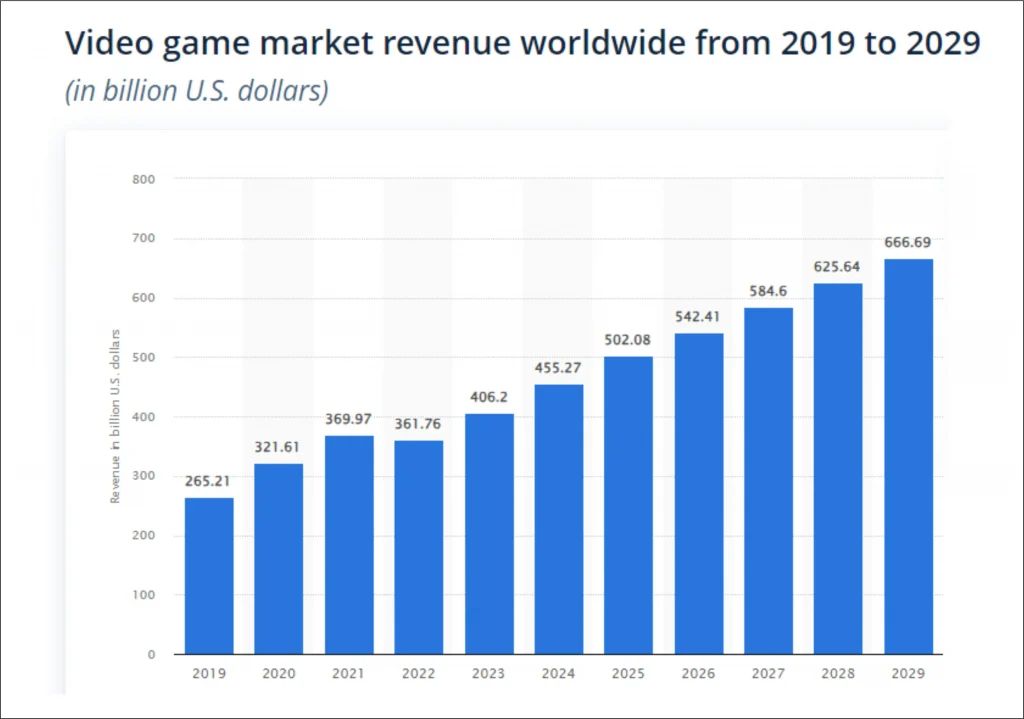
Source: Statista
From going to video game arcades to play games like Pac-Man and Galaxian to playing the same games at home on gaming consoles, video gaming has evolved a lot. At present, there is a growing population of gamers enjoying immersive gaming experiences through AR and VR. This shows that the gaming industry has expanded from a niche to a major revenue–generating sector. But how did it all start?
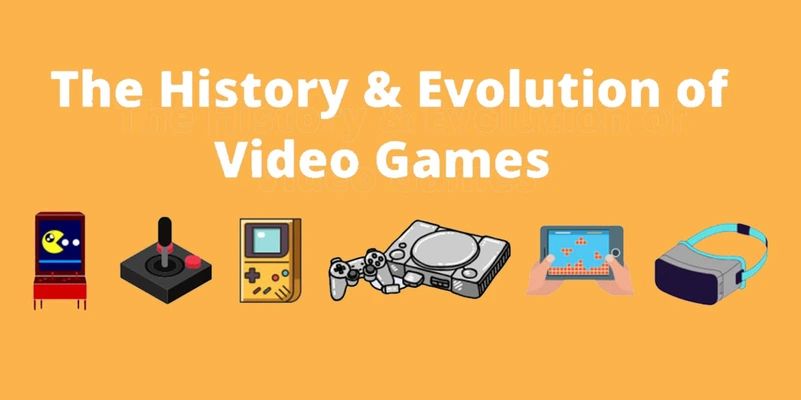
The US has the biggest video game presence in the world, and that is where it all started — in the late 1970s — with the creation of arcade games like Pong and the first home console, the Magnavox Odyssey. With the 3D revolution in the 1990s, gaming got a new dimension. In the 2000s, there was an increase in online multiplayer gaming, where players collaborated globally to enjoy their favorite games. As smartphone use increased, mobile game development companies in India and worldwide have been making games more accessible to billions through smartphones. Currently, virtual and augmented reality technologies are pushing boundaries, as game development companies are offering unprecedented levels of immersion.
Must Read: How to become a Game Developer?
Top 10 Trends in the Game Development Industry
The video game market revenue is predicted to reach almost $500 million by 2025. Today, the gaming industry is a major source of entertainment, along with movies and music. Let’s look at the future trends in gaming expected to rule the gaming world in the coming years.
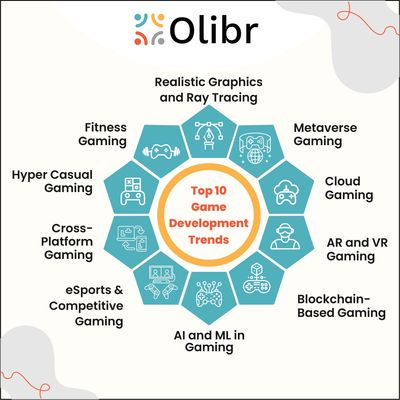
1. Metaverse Gaming
Metaverse is one of the crucial elements in virtual gaming. It is a virtual universe or a digital realm that imitates the real world. The main difference between traditional gaming and Metaverse gaming is that the latter offers a seamless blend of real and virtual experiences.
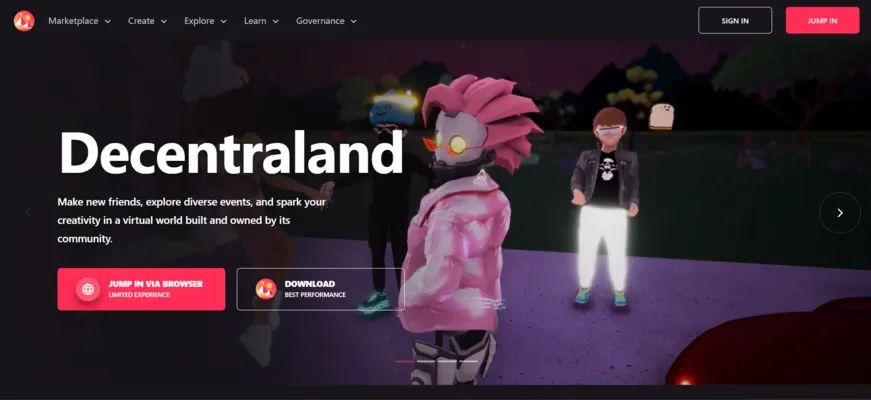
Source: Decentraland
For instance, Decentraland is a Metaverse game popular for its unique features and immersive gameplay. Players can purchase LAND, which are non-fungible tokens (NFTs) that represent a 10m x 10m piece of virtual land. The purchase can be made using the platform’s cryptocurrency token, MANA. Players can develop their land into virtual reality experiences including homes, restaurants, playgrounds, theaters, casinos, as well as other structures.
How is Metaverse changing game development?
Metaverse offers more chances for social interactions than traditional gaming does. This means more game developer jobs where there are opportunities to showcase creativity and skills. Metaverse blurs the line between virtual and real worlds with deeply immersive AR and VR experiences. Metaverse is a technology worth utilizing to build expansive virtual worlds for players.
2. Realistic Graphics and Ray Tracing
With realistic graphics, gamers can enjoy the lifelike appearance of characters, in-game objects, and environments in games. It is a technology that creates a more believable game world for gamers by creating physics simulations for objects, character movements, and animations.
Ray tracing is a rendering technique that adds an extra level of realism to games. Ray tracing in games tries to emulate how light works in the real world. With this technique, even games like Minecraft look near photo-realistic in the right conditions.
How are Realistic Graphics and Ray Tracing changing game development?
Realistic graphics and Ray Tracing allow highly detailed environments, characters, and effects. Ray Tracing significantly improves visual quality, making scenes more authentic and dynamic. For example, Samsung introduced Ray Tracing to the Galaxy S23 series, upgrading the mobile gaming experience for its customers. Ray Tracing creates simulations like desktop GPU, displaying shadows and light reflections in mobile games in a much more realistic manner. This opens opportunities for game developers who are proficient in building more lifelike gaming experiences that have the potential to draw players deeper into virtual worlds.
Together, realistic graphics and ray tracing set new standards for visual excellence, transforming gaming into a visually stunning and cinematic experience, driving innovation, and pushing hardware capabilities to their limits.
3. Cloud Gaming
Cloud gaming is a hit among players who don’t want to invest in gaming hardware or local game installations. In cloud gaming, the game is hosted in data centers on remote servers. These servers manage the game logic, physics, graphics rendering, AI, and other processing. They transmit the video and input data back and forth between the player’s device and the cloud servers. Cloud gaming allows players to use multiple devices, including smartphones, tablets, PCs, smart TVs, and gaming consoles, to access the game.
How is cloud gaming changing game development?
Experts have even called cloud gaming the future of video gaming as it makes highly immersive games accessible to more and more players with every passing year. The evolution of cloud gaming technology has eliminated the need for regular hardware upgrades or game consoles/PCs/laptops. This has led to an increase in gaming traffic and mobile games, most of which are based on new technologies. More importantly, it is also creating a healthy demand for Cloud Engineers, as games are now managed by virtual servers and distributed through streaming platforms.
4. AR and VR Gaming
Augmented Reality (AR) and Virtual Reality (VR) are experiences that make gaming more immersive by blending interactive digital elements with the real world. Gamers are placed inside a completely virtual environment in VR and AR games. Specialized headsets that offer a sense of presence and depth allow players to interact with the virtual spaces. For instance, Horizon: Call of the Mountain is a PlayStation VR 2-exclusive game with intense VR experiences. It involves climbing up mountains, shooting enemies with bow and arrows, and solving puzzles on the go.
Source: playstation.com
AR technology creates layers of digital and real worlds, creating a seamless environment between the physical and digital realms for gamers. Pokémon GO is the most popular free AR game for iOS and Android mobile devices. The game uses AR technology to let players experience an immersive augmented reality experience as they track down rare Pokémon hiding in plain sight in their surroundings.
How are AR and VR gaming changing game development?
The global augmented reality market size is expected to grow at a CAGR of 39.8% from 2023 to 2030. The influence of AR and VR makes gaming an exciting arena for both gamers and developers. Although AR and VR are new technologies, experts have predicted that soon they will feature more realistic graphics, higher resolutions, and better textures, creating more immersive environments. This means there will be an increase in demand for Game Developers specializing in AR and VR game technologies. In addition, there will also be a demand for game development software engineers and programmers proficient in technologies who can write codes for devices like wireless headsets, standalone AR glasses, and VR headsets to integrate better with games.
5. Blockchain-Based Gaming
Blockchain technology makes it possible to have transparent and secure transactions without the need for intermediaries. In gaming, it allows players to make use of decentralized systems to enjoy transparent, secure user engagement. Players can buy, sell, and trade digital items across multiple games using Blockchain. This allows them to build an interconnected gaming world where they own their in-game assets and set prices for them.
How is Blockchain changing game development?
Blockchain-based gaming helps in participation verification and prevents frauds. In the future, Blockchain is expected to have smart contracts to add autonomous elements to gameplay. Game Developers who can use Blockchain technology to build in-game assets such as items, characters, or virtual properties will continue to be in demand in the near future.
6. AI and ML in Gaming
AI is used in gaming to offer responsive and adaptive video game experiences. Both Artificial Intelligence (AI) and Machine Learning (ML) introduce new dimensions to gaming as they analyze players’ behavior to create personalized gaming experiences. For example, the game studio Rovio teaches Angry Birds to fly in the cloud through AWS Game Tech. It captures billions of analytic events per day and uses ML to predict and deliver fun-filled difficulty levels for players.
How are AI and ML changing game development?
Game Developers who can create characters as you play the game are here to survive the rapidly transforming Gaming industry. Games such as Doom, Minecraft, and StarCraft have already seen the use of ML techniques like Deep Learning to create a more customized, engaging gaming experience. AI and ML are used in video games for NPC (non-player character) control. AI shifts the control of the game experience toward the player by analyzing their behavior to produce a game experience tailored to player choices. AI and ML are being used to allow more dynamic and realistic NPC behaviors and encourage voice and natural language interactions.
7. eSports & Competitive Gaming
eSports merges gaming with traditional sports, professional leagues, live audiences and broadcast coverage. eSports and competitive gaming have evolved profoundly and, in the process, attracted the attention of professional sports committees and organizations. eSports in India and across the world has shown tremendous potential in the last few years and is changing the landscape of competitive gaming, turning it into a widely recognized sport. For example, FIFA held the FIFA Interactive World Cup from 2004 to 2017. It brought together the best EA Sports FIFA players from the world to compete for the official world title.

How is eSports changing game development?
In 2024, the revenue in the eSports market is forecasted to reach $124.8 million. eSports is expected to become more professional and a strong competitor to traditional sports. The growing hunger for competitive gaming has led to increased attention to game designs that are suitable for competitive play. eSports forms the core of competitive gaming and is opening avenues for game developer jobs where game designers can build video games that can be played in eSports competitions.

Don't miss out on your chance to work with the best
apply for top global job opportunities today!
8. Cross-Platform Gaming
Cross-platform gaming is seen as one of the best advancements in the past two decades by gamers. In simple words, cross-platform games are those that can be played over different gaming systems. So, you could play Call of Duty: Modern Warfare on your PS4 against someone playing on their Xbox One. Cross-platform gaming is said to offer more versatility and gameplay options. The Grand Theft Auto franchise and the Assassin’s Creed series are two more examples of cross-gen games.
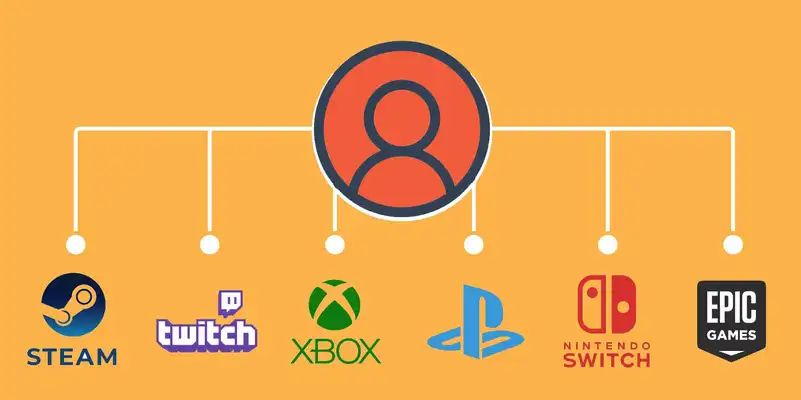
How is cross-platform gaming changing game development?
Cross-platform gaming brings together gamers from around the world, irrespective of their preference for gaming devices. It is expected to encourage social interaction and engagement and offer interconnected ecosystems backed up by seamless transitions. This means more opportunities for Game Developers who can leverage gaming technologies that offer cross-platform gamers a seamless and enjoyable experience across devices.
9. Hyper Casual Gaming
With the increase in access to mobile games, many people have turned to hyper–casual gaming on the go. Many people are seen enjoying instantly playable puzzles and stacking games during their break time at work. These games have short timers and are highly addictive as they operate on simple mechanics. For example, Helix Jump is a game where you rotate the axis to let the ball fall without touching the axis. It is a short, satisfying game that includes all the mechanics of hyper-casual games, like timing, turning, agility, and swerving. Hyper-casual gaming appeals to a wider audience because of its straightforward gameplay.
How is hyper-casual gaming changing game development?
Hyper-casual gaming is not only a big hit among all age groups but is also cost-effective and easy to develop compared to complex, high-production titles. Experts suggest that more and more game development companies are seeking developers who can combine minimalistic design with game development essentials to build hyper-casual games with simple but competitive elements.
10. Fitness Gaming
Fitness gaming technology seems to be the answer to the problem of a sedentary lifestyle caused by traditional gaming. Of course, video games are supposed to entertain players. However, the part where gaming makes one addicted to a sedentary lifestyle is often ignored. For the past ten years, fitness games have been catching the pace. It combines fun and entertainment with physical movements.

Source: nintendo.com
Fitness games can be played through apps and VR simulators through wearable gadgets and accessories. For example, Nintendo Switch Sports features games such as tennis, volleyball, and bowling to make gaming an enjoyable, active experience. Just Dance and Zumba: Burn It Up are popular dancing exercise games that have songs adjusted to different intensities to allow you to work out in the form of dance.
How is fitness gaming changing game development?
Fitness games encourage people to move while being entertained. The fitness gaming industry is a market with huge potential right now, especially for game developers who can design engaging gameplay that blends entertainment with physical activity. This also hints at an increase in game developer jobs where AR and VR elements ca be blended into fitness games for better, immersive game experiences.
What does it mean to be a Game Developer in 2024?
The rapid evolution of the gaming industry has turned gaming from a hobby to a global revenue generator. The journey from arcade games to immersive experiences in AR and VR signifies its expansive growth. The gaming industry of the future will be driven by trends such as metaverse gaming, ray tracing, cloud gaming, AR and VR experiences, and AI and ML integration, amongst others. As an aspiring game developer in 2024, individuals should possess technical proficiency in engines like Unity and programming languages like C++. Earning a specialization in emerging technologies such as blockchain, AR, VR, and AI is crucial. In addition, it is essential to adapt to cross-platform development, have knowledge of cloud gaming, incorporate fitness into gaming elements, and understand metaverse development. To conclude, Game Developers with a commitment to continuous learning, collaboration, networking, and a focus on user experience are set to succeed in the dynamic gaming industry of 2024.
Take control of your career and land your dream job
Sign up with us now and start applying for the best opportunities!

FAQs
The inclusion of sophisticated and dynamic in-game environments will be the next big thing in gaming. This includes trends like Metaverse, Blockchain, AR, VR, and eSports, as well as integrating AI and ML into gaming.
Sony, Microsoft, and Nintendo are popularly known as the Big 3 as they are the current leading manufacturers of gaming consoles.
The best programming languages for game development are those that offer versatile solutions for creating interactive gaming experiences. C++, C#, and Python are widely used for their performance and game engine support.
Most modern games are coded in C++ as it is efficient in managing graphics rendering, memory, and real-time multiplayer interactions.


